October brings Halloween and what better way to savor the anticipation than with a horror film a day.
I will be adding to this blog post each day to highlight a horror film that's worth watching as we countdown to my favorite holiday of the year. And on the 31st day, on the sacred Halloween day itself, everyone should be watching "Ash Vs. the Evil Dead." The films will all be available online so you can get instant gratification for your horror addiction. You can also follow me on Pinterest where I will be posting links and images from the recommended films.
Day 30: "The Evil Dead Trilogy" (1981-1992)
Halloween is upon us and this year there is one and only one way to end the month: watch The Evil Dead Marathon on Starz tonight and then the debut of the new series "Ash Vs. Evil Dead," also on Starz, on Saturday. Sam Raimi's "Evil Dead" films, featuring Bruce Campbell as the chainsaw wielding Ash, are the holy trinity for horror fans. They serve up Raimi's particular brand of "splatstick," splatter gore and slapstick comedy. His films are like gorefests made by Looney Tunes. Plus Campbell is pure groovy genius as Ash and the fact that he is returning as Ash for a new series is simply the best Halloween treat ever. So bring October to a close with a trio of the most quotable films ever and then Ash's return to action -- corset, dentures and all! Shop smart. Shop S-Mart.
Where to watch: Starz.
Day 29: "Suspiria" (1977)

I can't believe we are on Day 29 and I have not yet suggested any Italian horror! Then when I looked to recommend my favorite one, the one that got me hooked on spaghetti horror, I couldn't find it streaming on Netflix or Amazon or any of the familiar sites. And since streaming was one of the ground rules here I was furious that Dario Argento's "Suspiria" was so hard to find. And even on DVD it's hard to track down the uncut version. According to the America poster "The only thing more terrifying than the last 12 minutes of this film are the first 92." However, most versions that you find and that screen are not 104. In order to stick to the streaming condition, I did find the film on a couple non-mainstream sites so I am going ahead and recommending "Suspiria" because everyone should experience at least one Italian horror film.
The film is like a fever dream, delirious with color-saturated style and operatic violence. The colors and images have a seductive quality and the score by Goblin is unlike anything in American horror. So have yourself a nice Italian meal and some red wine and sit down to enjoy this audaciously over the top cult horror classic.
Where to watch: Potlucker and Daily Motion. (Note: these are not mainstream sites and because they are "free" they have ads so you might want to install an ad blocker... or cheat and not stream it and go buy a DVD or Blu-ray.)
Day 28: "Dr. Jekyll and Mr. Hyde" (1920)
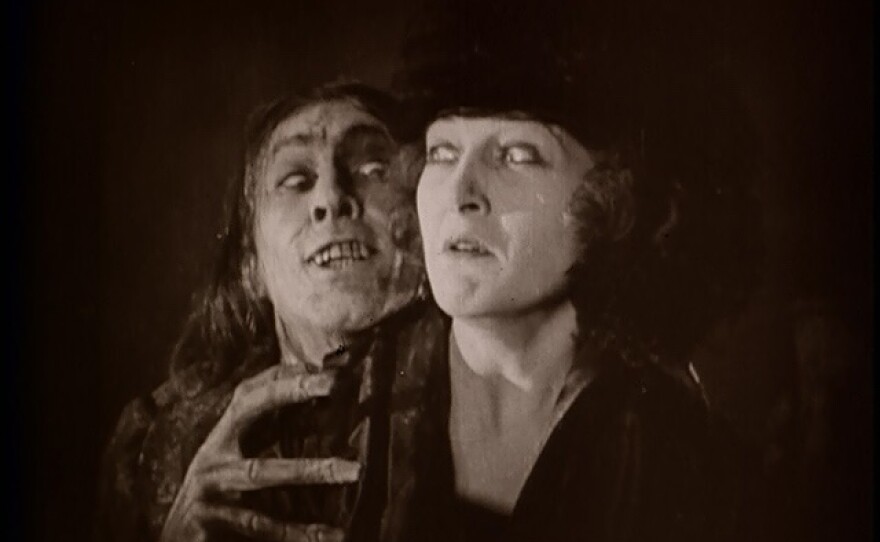
Today I have picked the silent version of "Dr. Jekyll and Mr. Hyde" for two reasons. First it is an underappreciated horror gem featuring a stunning performance by John Barrymore, a man famous for his matinee idol good looks. Barrymore jumped into the dual role of the doctor and his murderous alter ego with gusto. And second, I want to highlight two online sources for streaming films that are often out of the ordinary: Open Culture (all free) and Fandor. At these sites you can also find such other silent horror classics as Lon Chaney, Sr. in "Phantom of the Opera," the intensely creepy Max Schreck in "Nosferatu," and assorted shorts from Georges Méliès. These silents are a fabulous portal to a different time and a particular kind of cinematic magic. The acting style may be different but if you program a night of silent horror, you will quickly be seduced by these glorious early examples of fillmmakers exploring the darkness.
Where to watch: Open Culture and Fandor.
Day 27: "Perfect Blue" (1997)

I wanted to include an anime example of horror and while there is a plethora of horror anime series available streaming the list of features seems almost non-existent (which infuriates me!) But here's a good one to start with, "Perfect Blue." This is as good as Hitchcock's "Vertigo" for building suspense, and as perverse as Polanski's "Repulsion" or "The Tenant" for getting into the head of someone who may be losing her mind. The story focuses on a former pop singer turned actress who is stalked by an obsessed fan. Then the line between reality and fantasy starts to blur. The film is directed by the superb Satoshi Kon ("Memories," "Millennium Actress," "Paprika").
Anime lends itself to horror because there is nothing that cannot be created within the realm of animation, the imagination has no bounds and anime frequently takes full advantage of that.
Hopefully this will whet your appetite for anime horror and then you can seek out other features such as "Vampire Hunter D" and "Blood: The Last Vampire." As well as anime series to scare you: "Elfen Lied," "Gantz," "Paranoia Agent," "Serial Experiments Lain," and so many, many more. A horror fan could get lost in anime horror for years!
Where to watch: YouTube.
Day 26: "A Clockwork Orange" (1971)

I want to stretch your definition of horror again with today's pick "A Clockwork Orange." Stanley Kubrick's adaptation of Anthony Burgess' futuristic tale is not usually categorized as horror but it is most certainly a horrific story on multiple levels. Malcolm McDowell plays Alex, a violent young man who casually rapes, murders, and assaults. Kubrick plays up the emotional disconnect through his filmmaking choices that include the use of classical music or the tune "Singin' in the Rain" to accompany scenes of brutality. Then he presents a whole other kind of brutality once the government steps in to try and use experimental treatment to curb Alex's taste for a bit of the ultraviolence. Kubrick's masterful film is disturbing, savagely satiric, and presents a terrifying view of a future world. McDowell is riveting and I'd put him up against any iconic horror film killer from Freddy to Jigsaw. This is the stuff of real world nightmares.
Where to watch: Netflix and Google Play.
Day 25: "Never Sleep Again: The Elm Street Legacy " (2010)

In honor of the fact that filmmaker Andrew Kasch (along with his co-director John Skipp) was in San Diego last night for a Q&A after the screening of "Tales of Halloween" at the Digital Gym Cinema, I will highlight his documentary "Never Sleep Again." Kasch co-directed the near four-hour documentary on everything related to "Nightmare on Elm Street" with Daniel Farrands. What? A four-hour documentary? Are you insane? No. If you are a fan of the franchise then this in-depth doc will breeze by and keep you riveted. It seeks out as many participants in the film and TV franchise as possible to provide background on the origins of the "dream demon," behind the scenes stories, and insights into why it has had such longevity.
Where to watch: Netflix and Hulu.
Day 24: "Stitches" (2012)

It's Saturday morning so let's go for something fun: Clowns! Why is it that clowns stir such a primal response in some people. The mere mention of clowns can send some running out of a room. In "Stitches" Ross Noble plays a seedy kids' clown who meets a brutally funny accidental death at a children's birthday party and then comes back a decade or so later to seek revenge on the grown up party-goers. This is not a great film but it never received a U.S. release despite my efforts to bring it to San Diego for at least a midnight show. But what it does have is some phenomenally imaginative death scenes that keep upping each other while remaining true to the clown theme. This film would rock the midnight circuit, instead it sat (and still sits) on a distributor's shelf gathering confetti. If you are looking for something frivolous, gory, and lots of ridiculous fun, then book "Stitches" for your next Halloween screening party.
Where to watch: Hulu and Amazon.
Day 23: "Let the Right One In" (2008)

“Let the Right One In” is a horror film in the tradition of Guillermo Del Toro in that the monster — in this case a little girl vampire named Eli — is sympathetic and the film is poetic. What makes “Let the Right One In” unique is all the things it doesn't do, all the clichés it avoids. The opening sets the tone for the film. There's snow quietly falling and then we see a ghostly image of a young boy. The boy is Oskar and we realize the image is of his reflection in a window, and that's why he looks surreal and transparent. It's a lovely, simple shot yet it suggests something otherworldly. It also reveals the ingenuity of director and editor Tomas Alfredson since the shot requires no expensive special effect yet it creates an effective visual trick.
“Let the Right One In” (and make sure you see the Swedish original and not the American remake "Let Me In") boasts an elegant production design and is all about graceful, delicate control. Nothing feels heavy-handed or contrived. “Let the Right One In” is fresh and original and just as “Shaun of the Dead” put the romantic comedy in the foreground and the zombies in the background, “Let the Right One In” engages us first with the characters and then says, "Oh by the way did we mention Eli's a vampire?" First and foremost, the film delivers a tale of adolescence.
Where to watch: Netflix and Amazon.
Day 22: "Re-Animator" (1985)
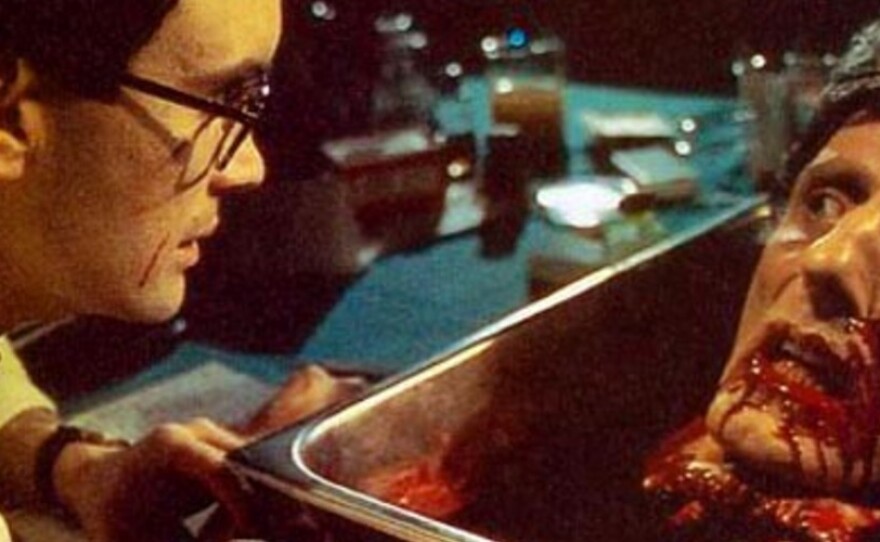
Inspired by H.P. Lovecraft, Stuart Gordon's cult classic "Re-Animator" has taken on a wild life of its own. The film was made in 1985 and was then transformed into "Re-Animator The Musical" in 2011, complete with a splash zone for anyone interested in getting sprayed with blood. (Check out my NPR feature on it.) Both the film and subsequent musical stage play deal with Herbert West, a med student who discovers a way to bering the recently dead back to life. The only problem is, they come back understandably pissed off. The film features an intensely focused performance by Jeffrey Combs as West and some "splatacular" gore effects. The film has humor but takes the story seriously so that you actually care for the characters and so that themes about how far man should take science can actually develop. Everything about this film is wonderful and endlessly re-watchable. If you haven't seen it yet, you must remedy that oversight. If you've already seen it, what are you waiting for? Put it on again right now!
I will be posting a podcast on Oct. 23 featuring the creative team behind "Re-Animator The Musical," including an interview with Stuart Gordon.
Where to watch: Netflix and Google Play.
Day 21: “The Host” (2006)

Imagine “Little Miss Sunshine” and “Alien” mixed together and you'll have an inkling of what South Korea's “The Host” has in store for you. The best way to see “The Host” is to know nothing about it so that it can surprise you. So all I’ll say is the film does focus on a family of what director Bong Joon Ho calls "losers" who try to cope with the problems of everyday life. Complicating matters for them, and the rest of the country, is the sudden appearance of a mutant creature in the Han River. OK, that's all I have to say about the plot.
Director Boon Joon Ho mixes elements of broad comedy, serious family drama and popcorn monster movie to deliver a highly entertaining tale laced with biting social commentary. Plus, unlike films like “Cloverfield,” we get to see the monster and see it early.
Where to watch: Netflix and Amazon.
Day 20: "Day of the Dead" (1985)
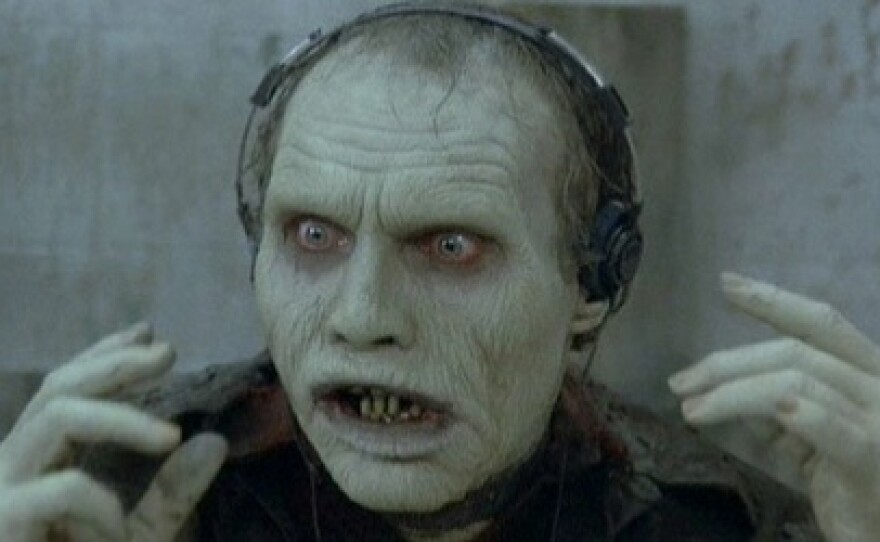
No horror list or Halloween viewing plan can be complete without a George A. Romero zombie film. "Night of the Living Dead" (1968) has the distinction of being the first and "Dawn of the Dead" (1978) is often and rightly regarded as the best but I want to give some love to "Day of the Dead" (1985). Aside from being every bit as good as its predecessors, "Day" also has the distinction of introducing the first self-aware zombie in Bub (Howard Sherman). Now we have self-aware zombies all over the place ("Warm Bodies," "iZombie," "In the Flesh," "Life After Beth") but Bub was the first and the best. He is by far the most endearing zombie ever and the film, like all of Romero's zombie films, uses the undead to make social commentary. In this case, Romero comments on how far vivisection should be allowed to go in the name of science.
Where to watch: Netflix and Hulu.
Day 19: "Rosemary's Baby" (1968)
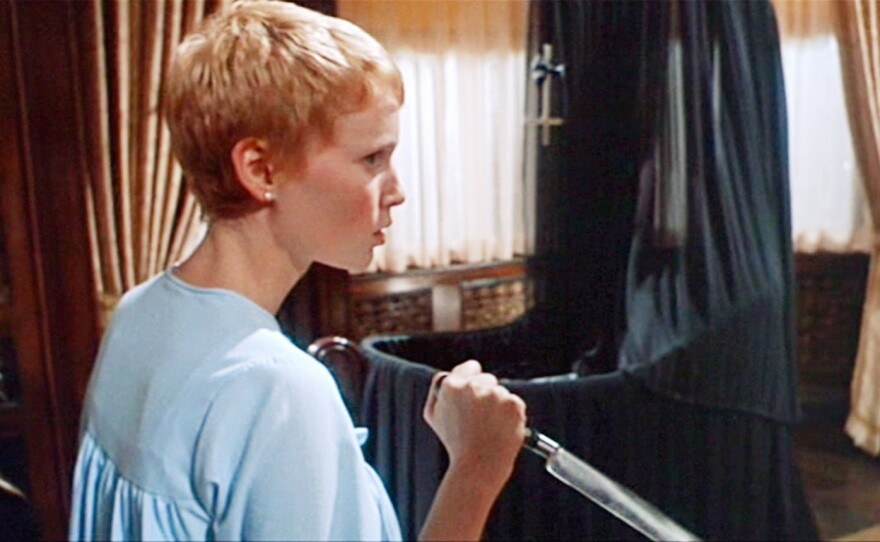
Roman Polanski has created some of the most terrifying films but he's not really considered a horror director the way someone like George Romero or Wes Craven are. I'm choosing "Rosemary's Baby" because it fits the genre the best and is an immaculate production. But I also highly recommend "Repulsion" and "The Tenant" for films that brilliantly convey the terrors of someone losing his or her mind. "Rosemary's Baby" has Mia Farrow and John Cassavetes as a young New York couple whose lives seem quite normal but then something satanic seems to be going on once the wife gets pregnant. Is it possible that Satan is the father?
This is a slow burn, creepy as hell film with killer work by Ruth Gordon, Cassavetes, and Farrow. Polanski knows how to use the mundane to make the horror more shocking. But please, stay away from the mini-series remake.
Where to watch: Netflix and VUDU.
Day 18: "Frankenstein" (1931) and "Bride of Frankenstein" (1935)

Any Halloween month horror film plan must include something from the early Universal horror era so here's a classic and absolutely essential double bill: "Frankenstein" (1931) and "Bride of Frankenstein" (1935). Both films were directed by James Whale, starred Boris Karloff as the Monster, and had Jack Pierce creating the phenomenal makeup. Whale brought an unexpected compassion and sympathy for the Monster, which is why when I asked Guillermo Del Toro what film he was most thankful for he said it was "Frankenstein."
Del Toro said, "I am very thankful for James Whale’s 'Frankenstein' because I believe that it is one of the most beautifully articulate ways of saying how we are thrown into this world by a creator that does not care for us, and how we have to find our way in it."
These films are a vital part of the history of cinematic horror and they are exquisitely made. Karloff brings the Monster to life with such wonderful emotion, and Elsa Lanchester as the Bride is only on screen for a few minutes and yet she created an indelibly iconic image that still resonates today. Each film is only about an hour so they make a short and richly rewarding double feature for a Sunday.
Take a listen to my podcast with Horrible Imaginings Film Festival director Miguel Rodriguez where we talk all about Universal horror, and join us on Oct. 22 at the Digital Gym for Edgar G. Ulmer's rarely screened Universal horror film "The Black Cat" as part of The Film Geeks at the Digital Gym's TBT Horror Film Showcase.
Where to watch: Amazon and Google Play.
Day 17: "Monster Squad" (1987)

It's Saturday so it's time for another creature feature, this time "Monster Squad" from 1987. I'm picking this film for two reasons. One, it's a fun kid horror comedy featuring classic Universal monsters resurrected for a new generation. No CGI monsters here, all makeup effects and suit acting, and they look great. But the second reason I picked it is that if you are getting your movies on Netflix as many people do, this is the only film featuring classic Universal horror monsters such as Frankenstein's monster, Dracula, Wolf Man, the Mummy, and the Creature. Shame on Netflix for not showcasing any of the original Universal horror films of the 30s and 40s. So to include "Frankenstein," "Bride of Frankenstein," "The Wolf Man," or any of those amazing films, I'll have to send you to other streaming sites (which I will!). In the meantime though, enjoy this '80s cult classic.
Where to watch: Netflix and Google Play.
Day 16: "The Babadook" (2014)

Since I will be posting a Cinema Junkie podcast later today psychoanalyzing "The Babadook," I decided to highlight the film for day 16 in this month of horror. The film has all the trappings of a boogeyman thriller. It plays on our universal childhood fears of something lurking under the bed, in the closet, or out in the dark just beyond the night light. But writer/director Jennifer Kent turns this horror formula into something much creepier and emotionally more disturbing. Mr. Babadook (and the accompanying tropes about creatures under the bed and evil lurking in the house) serves as the MacGuffin in the film, it’s the thing around which the plot seems to revolve but it’s ultimately unimportant. What Kent’s film is really about is a damaged bond between a mother and her son. This is part of a new wave of horror that has me inspired. It takes the horror seriously (which is not to say it is humorless), it refreshes tropes with original ideas, and it reveals an assurance of style. This is a must-see of recent horror. Devastatingly good performances too.
Where to watch: Netflix and Amazon.
Day 15: "Bad Milo" (2013)

To further my cause of highlighting films that might have flown under people's radar, here's a darkly comic creature feature called "Bad Milo." Ken Marino plays Duncan, a man who is suffering from so much stress that a twisted, id-like creature grows inside of his intestines and pops out of his anus at peak moments of anxiety to kill people. Hilarious, raunchy, and ridiculous, "Bad Milo" is great to watch with a group of friends. The practical effects are gross and delightful, and everyone jumps into the comic absurdity with gusto. Milo is the name given to the demonic creature that looks like a deformed ET and just seems to crave love — in that me and only me kind of way — in order to be kept in check. The relationship between Milo and Duncan gives the film its sweetly twisted core. Intestinal fortitude required.
Where to watch: Netflix and Amazon.
Day 14: "The Devil's Backbone" (2001)
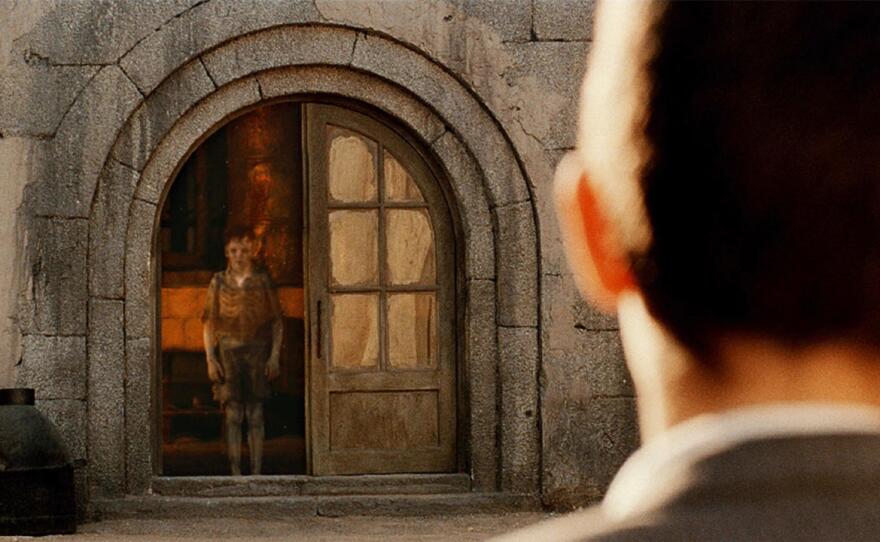
What's Halloween without a ghost story? Since Guillermo Del Toro is serving up a new ghost story this Friday with "Crimson Peak," I thought it would be fun to revisit his earlier ghost tale "The Devil's Backbone."
To understand Del Toro a little better let me recount this story he told me in a 2001 interview. When he was four-years-old, he had a life altering experience. After watching an episode of "The Outer Limits," Del Toro's brother dressed up like the bug-eyed monster from the TV show to scare his younger sibling. "Then," the adult Del Toro recalled, "I woke up and had an urgent need to pee. I looked around and saw monsters everywhere. There was this fluffy carpet and I thought every single strand of the carpet was a finger and in the closet I saw a big monster. I was so scared that I resigned myself to pee in the bed. That happened almost every night for a couple of weeks and my mother said ‘If you pee in your bed again, I'm gonna really give you a good one.' That night I woke up and wanted to go to the bathroom so I spoke to the monsters in the room and I said that 'if you let me pee, I will be your friend forever.' They allowed me and here I am peeing happily and making monster movies."
"The Devil's Backbone" is one of Del Toro's best films that turns genre expectations on their ear by giving us a sympathetic monster, in this case a ghost. It may create false expectations to call the film merely a ghost story. This is not a film about things that go bump in the night and it’s not after cheap thrills. At its core, "The Devil’s Backbone" is a melancholy exploration of things that can cripple childhood, which in this case is war. This is a horror film with a soul. See this before — or after — "Crimson Peak." Sadly, the earlier work is the far better one.
Where to watch: Amazon and Google Play.
Day 13: "Henry: Portrait of a Serial Killer" (1986)

The real world often serves up more horrific things than a filmmaker can imagine so for day 13, I offer "Henry: Portrait of a Serial Killer" based on real-life serial killer Henry Lee Lucas. I saw the film at the Telluride Film Festival in 1988 (it was made in 1986 but sat on the shelf till 1989) where a good portion of the audience walked out in protest of the violence and brutality. The director fielded questions and some angry criticism until veteran actor Lawrence Tierney (who was not in the film but was attending the festival) lumbered down the aisle yelling at the people complaining and he championed the film. Wow! That was impressive. The film stirs strong reactions and its "low-budgetness" in some ways makes it all the more effective and disturbing. Michael Rooker is frighteningly good as Henry, a man who kills randomly and without emotion. McNaughton said he made the film when asked to come up with a low-budget horror film, and he decided that rather than try to imitate the Freddies, Jasons, and Michael Myers, he would look to the real world. This gritty, indie film was shot on 16mm in 28 days with a budget of $110,000 and it is a stunning work of horror.
McNaughton has a new horror film called "The Harvest" that is also available on Netflix. I need to check that out.
Where to watch: Netflix and Hulu.
Day 12: "American Mary" (2012)
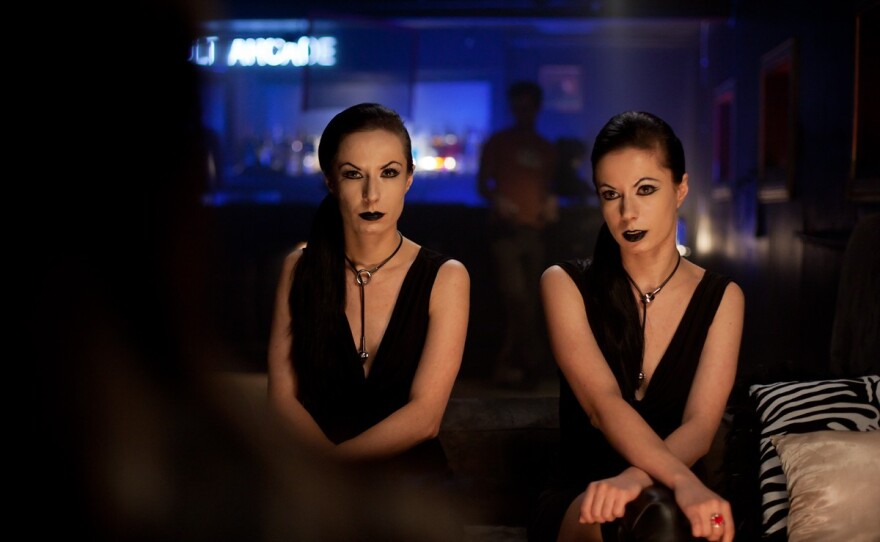
Jen and Sylvia Soska are Canadian twin filmmakers with a taste for horror and gore. They burst on the scene with a gritty action splatter ride called "Dead Hooker in a Trunk" and then delivered the sophisticated and brutal "American Mary." These sisters know how to make a movie that makes your skin crawl. On one level this is a rape-revenge tale in which the most genuinely horrific scene is the rape and the revenge proves disturbingly fitting for the crime. But it's also a film in which the supposed "freaks" are the normal people. Brilliant performances from Katherine Isabelle and Tristan Risk.
The Soskas (AKA Twisted Twins Productions) are currently working on a horror game show called "Hellavator" that debuts on GSN on Oct. 21. I'm thrilled that the twins have been consistently picking up industry work but I am hoping that they will soon return to the fiercely independent realm of filmmaking where they started so that we can see something more personal from them. In the meantime, check out the deliciously dark, twisted, and original "American Mary."
Where to watch: Netfilx and Amazon.
Day 11: "The Final Girls" (2015)
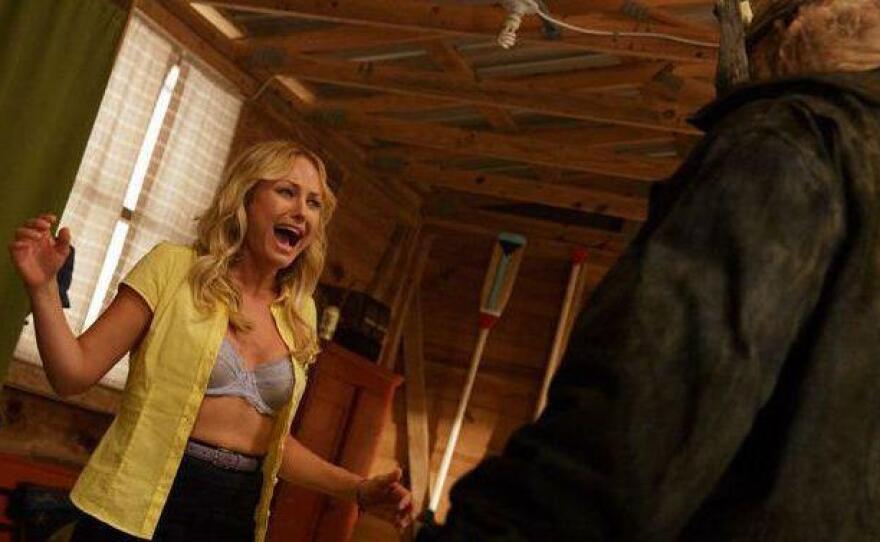
For Day 11, check out something brand new — "The Final Girls" — that proves something very old — Hollywood and mainstream movie theaters don't know what to do with clever horror films. I've been wanting to see Todd Strauss-Schulson's send up of '80s slasher films for months. The Film Geeks, a group of volunteer film programmers I'm a part of, tried to get it for The Digital Gym Cinema but the distributor wouldn't let us screen it on Blu-ray (the only current means of projecting films at the Digital Gym). And guess what? No theater chain in San Diego picked up the title for its opening day of Oct. 9. But Eli Roth's atrocious "The Green Inferno" is still playing at mainstream theaters. That's messed up.
So I had to seek out "The Final Girls" online and watch at home. Not ideal but the film still rocked. However, this film is really meant to be watched with a group of people in a darkened theater where you can all gasp, giggle, scream and enjoy each horror cliché as it is sent up and refreshed.
The film's not as smart as "Cabin in the Woods" but it's a loving comedy about '80s slasher films that aims its comic assault and affection on the trope of the "final girl" (the virginal heroine who makes the last stand against whatever serial killer/boogeyman is killing off promiscuous teens). The film is well scripted, nicely shot, and acted with the right blend of fun and seriousness. Plus it delivers the goods because Strauss-Schulson knows the genre well and obviously loves it.
It's a shame San Diego did not get this on the big screen but don't let that mean it doesn't make your radar. Check this one out for a bloody good time. It's also kind of sweet.
Where to watch: iTunes and VUDU.
Day 10: "The Baron of Terror or The Brainiac" (1962)

It's Saturday and in the spirit of those creature feature shows you used to watch as a kid on the weekend, here's a silly and delightful selection to entrall you, "The Baron of Terror or The Brainiac." In order to appreciate the good you sometimes need to experience the bad and I use the word bad here with the deepest affection. "The Brainiac" (Spanish title: "El barón del terror") is a 1962 Mexican horror film directed by Chano Urueta, and starring Abel Salazar and Germán Robles (who played the titular "El Vampiro" in 1957). The film takes us back to Mexico of 1661 as the Baron Vitelius of Astara is sentenced to be burned alive by the Holy Inquisition for witchcraft and assorted other crimes. As he dies, the Baron swears vengeance against the descendants of the Inquisitors. It takes him a few centuries but when a comet that had passed overhead on the night of his execution returns to earth, the Baron also returns in the form of a brain-eating monster with a ridiculously long tongue that seeks to destroy the Inquisitor's descendants.
The charm of this film is its low budget effects and B- movie enthusiasm. The monster is hilarious but in a manner that is totally endearing. As with Mexico's "Ship of Monsters" (1960) there is a kind of naïvieté that completely wins you over and has helped the film achieve a cult film status.
Where to watch: Netflix and YouTube.
Day Nine: "We Are What We Are" (2013)
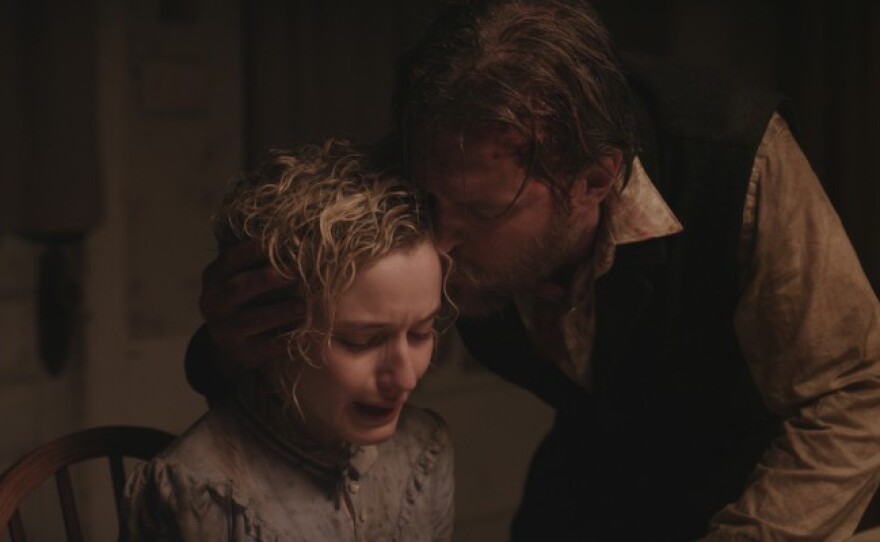
I'm picking the exquisitely crafted "We Are What We Are" for multiple reasons. It is a remake that works; it combines horror and beauty; it is a return to serious horror where the filmmaker is not concerned with being hip, meta, or jokey; and it's another example of an outstanding horror film that failed to get wide distribution.
Writer/director/editor Jim Mickle does everything right in tackling the remake of Jorge Michel Grau’s 2010 Mexican film “Somos Lo Que Hay/We Are What We Are." He was hesitant to take it on and only did so once he figured out a way to make the material his own.
As with the original film, this new version focuses on a reclusive family. In Mickle’s film, we have the Parkers, headed by patriarch Frank (Bill Sage). The Parkers have always kept to themselves, and Frank runs his family with a fierce sense of conviction to his ancestral traditions. The film throws us into their lives just as tragedy strikes leaving his daughters Iris (Ambyr Childers) and Rose (Julia Garner) forced to assume some horrific family customs, and then show how, as Shakespeare said, "blood will have blood." Mickle delivers a bloody ending that is likely to jolt the audience, and it is a scene entirely unique to his version of the story.
The basic outline of the plot is the same as the original but the twist Mickle and co-writer Nick Damici find is to take this tale of modern day cannibalism and give it a religious, Puritan spin, endowing it with a sense of ritual and even beauty.
Mickle says it’s frustrating trying to convince people that horror and beauty can work together. But “We Are What We Are” is proof. By making an elegantly shot, visually seductive film with young girls (who look like Botticelli madonnas) faced with horrific choices from their own loving father, he sets the horror off in bold relief. In “Texas Chainsaw Massacre” there’s no surprise to having a chainsaw-wielding man in a mask made of human flesh turn out to be a cannibal. That film – stunning in its own right - was about horror being ugly from start to finish. But “We Are What We Are” wants to come at horror from a less travelled road, and that’s what makes it so startling and fresh.
“We Are What We Are” is not just a stunning remake but a provocative film about the horrors we can find within the usual comforts of family and tradition. Check out my interview with director Jim Mickle.
Where to watch: Netflix and iTunes.
Day Eight: "A Girl Walks Home Alone At Night" (2014)
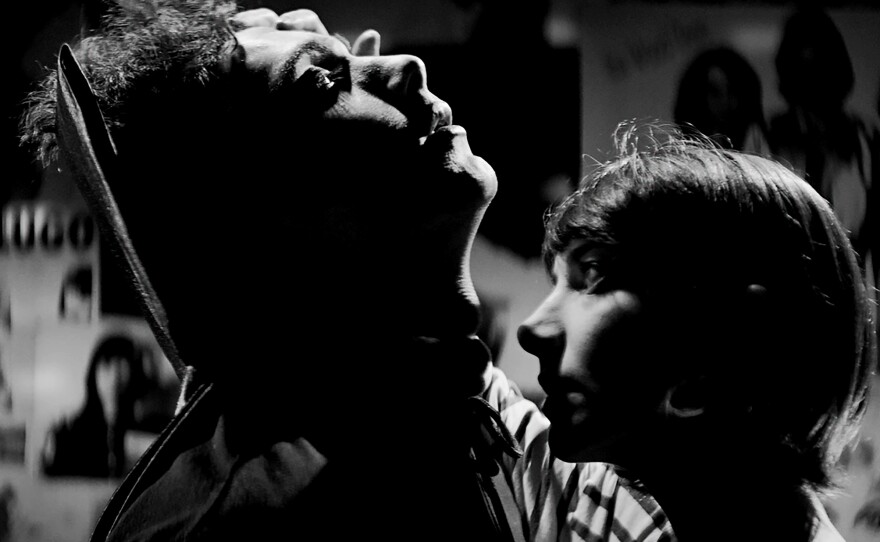
In describing her film "A Girl Walks Home Alone At Night", Iranian writer-director Ana Lily Amirpour writes: "In the Iranian ghost-town Bad City, a place that reeks of death and loneliness, the townspeople are unaware they are being stalked by a lonesome vampire."
Again, part of the goal of this list is to highlight films that people might have missed and this film, though widely acclaimed by critics, got limited play in theaters. It's a gorgeous, black and white take on vampire lore but filtered through a modern, female, Iranian sensibility. So many lovely new layers to peel back. There are not many women making horror (highly recommended are Kathryn Bigelow's "Near Dark," Mary Harron's "American Psycho," Jen and Sylvia Soska's "American Mary," Marina de Van's "In My Skin") and even fewer making exceptional horror with a fresh twist but "A Girl..." is one to cherish. It pairs nicely with "Only Lovers Left Alive."
Where to watch: Netflix and Google Play.
Day Seven: "A Nightmare on Elm Street" (1984) and "The Nightmare" (2015)

Last night I watched "A Nightmare on Elm Street 3: Dream Warriors" and followed it up with a documentary called "The Nightmare," about sleep paralysis. OMG! I couldn't have planned a better double feature so I decided to offer up for Day Seven a double bill of the original "A Nightmare on Elm Street" (Wes Craven at his surreal best!) followed by "The Nightmare" for a evening of horror that will make you think twice before going to bed. Wes Craven (check out Cinema Junkie Podcast Episode 21 on the director) noted that he was inspired to create "A Nightmare on Elm Street" and its Freddy Krueger character that terrorized teens in their dreams after reading about real life stories from South East Asia of people dying in the midst of their nightmares. Yeah, Freddy Krueger is based on a true story and that idea is further strengthened by the new documentary "The Nightmare" that examines the phenomena of sleep paralysis. The documentary (although not that well made from an artistic standpoint) gathers riveting and terrifying first person accounts of people suffering from this sleep disorder. What's fascinating is the commonalities that arise across people, cultures and time. Much of what these people describe reflects the imagery found in a lot of horror literature and film. I highly recommend watching these two back-to-back late at night and alone for maximum effect. It's a delicious night of terror.
Also check out this photo essay on sleep paralysis.
Where to watch: Netflix and Amazon.
Day Six: "Tucker and Dale Vs. Evil" (2010)

I don't know what it says about the powers that be in Hollywood (actually I do know what it says, it says they are IDIOTS!) but two of the best horror comedies of all time sat on the shelf for years before finally getting released to audiences. "Cabin in the Woods" and "Tucker and Dale Vs. Evil" are clever, blood-soaked, hilarious horror comedies that affectionately and smartly send up the tropes of the genre. These films are now mainstays of any horror fan's collection and yet they almost didn't get released. "Cabin in the Woods" at least had Joss Whedon's name as producer to get it some buzz but "Tucker and Dale" still remains a bit of an underappreciated gem to mainstream audiences.
Tucker (the ever delightful Alan Tudyk) and Dale (Tyler Labine) are good buddies, and to the touristy coeds far from their city digs, they also seem like murderous backwoods hillbillies. So when Tucker and Dale head out to their vacation home up in the mountains, the slumming coeds mistake them for rampaging Jasons. As the boys try to correct the misconceptions, bodies start to pile up in bloody fashion.
The great thing about Eli Craig's film debut is that even though you know what's coming, the film feels entirely fresh and you take pleasure in seeing it deliver. What's fresh is the concept, the turning the tables on horror expectations. So the hillbillies are sweet, the black kid doesn't die first, and the violence is almost all unintentional. What's so much fun is to see how Craig is going to set up a horror convention and then skewer it — sometimes literally. This is a horror comedy designed to tickle horror fans who have grown frustrated with the often predictable formula of the genre they love. Now Craig comes along to invigorate the familiar.
"Tucker and Dale" delivers on both horror and comedy. And underneath all the blood and gooey bits of gore, Craig also has something to say about not judging people or situations by appearances.
Where to watch: Netflix and Hulu.
Day Five: "The Act of Killing" (2012)

It's easy to pick films like "Halloween" or "The Exorcist" for a list like this but you'd have to be living under a cultural rock to not know about these movies. What I'd like to do with this list is provide some expected horror classics as well as to push the envelope in terms of how you define the genre. So on day five, I serve up “The Act of Killing,” a film that challenges both the documentary format and our notion of how we define horror. This may be the most originally conceived documentary I’ve ever seen. Filmmaker Joshua Oppenheimer approached former Indonesian death squad leaders and asked them to reenact their real-life murders in whatever cinematic genre they preferred ranging from brutal action film to lavish musicals. The film offers a chilling insight into the mind of a mass murderer who also happens to be a national hero. At one point death squad executioner Anwar Congo brings his grandsons in front of the TV to watch their grandpa play a torture victim. It is such a disturbing, chilling moment that you are riveted to the screen.
At this year's Horrible Imaginings Film Festival there was a sidebar called Horror for Humanity, which highlighted films in which the horror stemmed from the real world rather than from monsters, aliens, or demons. It became a much discussed sidebar. Considering films like "The Act of Killing" or "My Mother's Songs" (from the Horrible Imaginings sidebar) opens up the horror genre to something potentially rich and horrific in new ways. "The Act of Killing" is a startling, provocative, and disturbing work. It'll make you rethink documentary, horror, and even some social issues. There are two versions of the film, the theatrical cut and a director's cut that's about 30 minutes longer, I give the edge to the director's cut.
Where to watch: Nextflix and Amazon.
Day Four: "The Beyond" (1981)

In honor of musician Fabio Frizzi playing a concert in LA Sunday, here's Lucio Fulci’s 1981 cult classic “The Beyond.” Frizzi composed the film's memorable and brilliant score. The film's about a young woman who inherits a hotel that was built over one of the seven gates of hell. “The Beyond” epitomizes Italy’s unique brand of horror and fantasy. Fulci’s films in particular have a striking visual style, a penchant for unrestrained gore, and the terror of a waking nightmare. Although the genre boasts such famous fans as Clive Barker, John Carpenter and Quentin Tarantino, it has humble roots.
“I don’t think that here in Italy they had a big impact when they came out because they were considered like not B movies, but zed movies,” Fulci’s daughter Antonella explained to me back in 1998. “They did not consider them so important to write about it.”
“The Beyond” star, Catriona McColl, told me that the film was so gruesome she had a hard time watching the entire film.
“I still find various of the shots, like Joe coming out of the bath, I find that absolutely horrendous,” McColl recalled. “And there are various things that I actually can’t watch I actually have to put my hands over my face and wait till it’s all over which is kind of pathetic. But it still affects me.”
What makes Fulci’s spaghetti horror films so effective is their blend of visceral violence and subtle chills. Antonella frequently joined her father on the set and noted, “he was a dictator with the sounds. He said even the sound is very scary sometimes and it’s true. And he said, ‘Ohh, you have to see the lights.’ He wanted from the start to end of the movie, the people must seem dead, somehow, so the light is very cold in the movie.”
Lucio Fulci claims never to have had a nightmare in his life. Yet his films have caused others to have some his daughter said.
“Now after years, I think they have a great style,” Antonella said. “They are frightening. I have lent my tapes to some friends who are younger than me and I thought young people couldn’t be frightened by anything, and they got scared and called me after when they went home and said I am scared of this movie.”
Actress McColl felt Fulci’s obsession with horror and fear reflects the extreme emotions and passions of the Italian character: “the Italians are renowned for being terrific designers in various domains, so the art work in those movies — especially considering they didn’t have the technology that we have today or the money in actual fact — it’s pretty incredible. Whether one likes it or not, it’s extraordinary what they managed to do with very little. When I describe to people the zombies, they are design-wise quite effective, I remember being amazed when I saw Giannetto making them up at 7 in the morning, and he finished them off by just picking up a pot of orange jam and pouring it on the top of their heads so it drips down and it’s very effective.”
Although not much scared Lucio Fulci, he seemed acutely tuned in to what could scare his audiences.
Where to watch: Amazon and Hulu.
Day Three: "Pontypool" (2008)
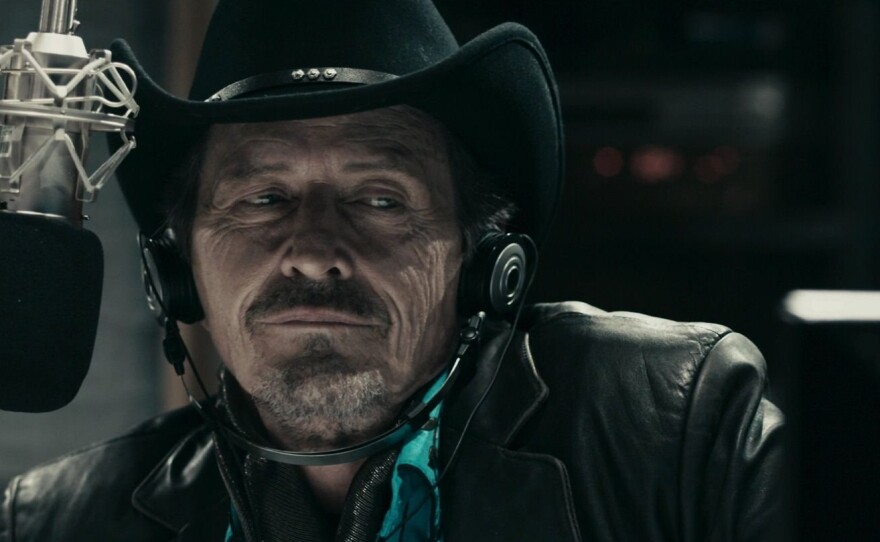
"Pontypool" serves up a zombie film without zombies. How can this be? It's a brilliant and claustrophobic re-imagining of the zombie genre. It traps us inside a radio station for essentially the whole movie as the characters hear about bizarre things happening in the town – unprovoked attacks, people turning on loved ones, mobs terrorizing people. The innovation that "Pontypool" brings to the table is how the infection is spread. It's not from a virus or from a bite or even because there's no more room in hell. The infection in this case is spread through language. That's right, if you hear an "infected" word, you can become something that's essentially a zombie. You don't die and become reanimated but your brain ceases to function normally and you suddenly want to attack those who are uninfected. The way this zombification process works taps into our fear about loss of identity and fear of some degenerative mental illness like dementia that slowly robs us of who we are.
The book "Pontypool Changes Everything" came out in the late 1990s and much of it was told from the point of view of one of the zombie characters. The film "Pontypool" doesn't take that perspective but rather makes us a trapped observer that keeps hearing about the chaos just outside the radio station. At one point a group of actors come in to perform a scene from their musical "Lawrence of Arabia." A young girl in the group forgets her lines and starts to repeat words in an endless and nonsensical loop as she frantically searches for a word that has some meaning she can latch onto. It is a terrifying moment and not a drop of blood is spilled. It's terrifying because it taps into a very primal fear about loss of self. This is an underrated gem and I hope people will seek it out.
Where to watch: Netflix and Amazon
Day Two: "Hellraiser" (1987)
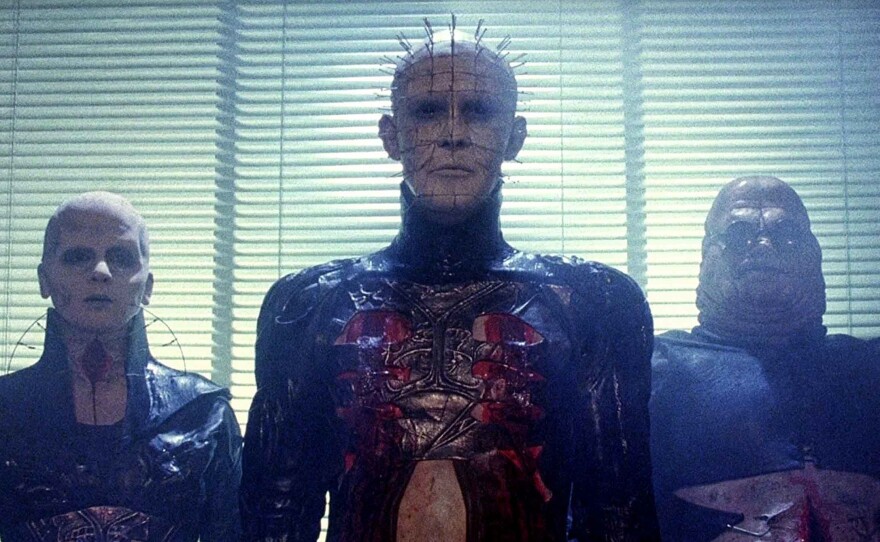
Guillermo Del Toro may have made monsters sympathetic but "Hellraiser" Director Clive Barker gave them an eloquent if disturbing voice in his feature directing debut. As Barker told "Crimson Celluloid" in 1988:
"Generally [in monster movies] the monsters don't talk about their condition - about being a monster. What I wanted Frank to be able to do was have dialogue scenes, even romantic scenes that play between him and Julia. I wanted Frank to be able to stand around and talk about his ambitions and desires because I think what the monsters in movies have to say for themselves is every bit as interesting as what the human beings have to say. That's why in stalk and slash films I feel that half the story is missing. These creatures simply become, in a very boring way, abstractions of evil. Evil is never abstract. It is always concrete, always particular and always vested in individuals. To deny the creatures as individuals the right to speak, to actually state their case, is perverse - because I want to hear the Devil speak. I think that's a British attitude. I like the idea that a point of view can be made by the dark side."
In "Hellraiser," Frank (Sean Chapman) opens a portal to hell when he plays with a puzzle box and inadvertently unleashes beautifully grotesque beings called Cenobites, who will "tear your soul apart." The film allowed Barker to indulge in his particular form of body horror and gave us one of the most memorable monsters in Pinhead (played by Doug Bradley).
It's a sin that Barker wasn't able to direct more films because he has a unique spin on horror that finds beauty, terror, intelligence, and originality in the genre. My 2005 interview with Barker kicks off a month of horror-themed podcasts on Cinema Junkie this month.
Where to watch: Netflix
Day One: "The Cabinet of Dr. Caligari" (1920)

Let's begin at the beginning. "The Cabinet of Dr. Caligari" (from Germany) is considered by some as the first horror feature (Georges Méliès is generally credited as having made the first horror film with his 1896 "Le Manoir du Diable").
But first or not there's no disputing the impact this seductively expressionistic film had on the genre and future filmmakers. The story is framed as a flashback with a young man named Francis recounting a fantastic tale about a carnival act featuring Dr. Caligari (Werner Krauss) and his somnambulist, Cesare (Conrad Veidt), a hypnotized man who the doctor claims can see into the future. Cesare predicts the death of Francis' friend by morning, and the man is in fact murdered. It becomes evident that Caligari is commanding the sleepwalking Cesare to carry out the murders.
The film serves up spectacular sets, cinematography, and performances. Most memorable perhaps are the jagged, oddly angled, and asymmetrical sets (some made out of paper with shadows painted on) that convey the skewed perspective of the main character and help to convey a sense of danger and paranoia.
Where to watch: Netflix and YouTube






